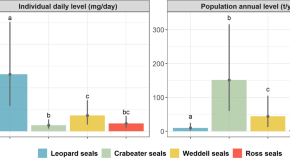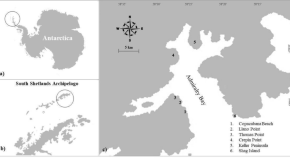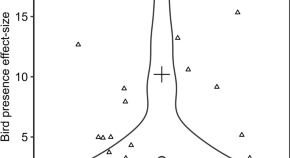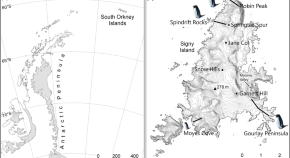
Collection
Special Issue: Biotically Mediated Nutrient Transfer
- Submission status
- Closed
In the current era of multi-faceted environmental and climate changes, which often occur at their highest rates in the polar regions, the concept of linkages between the major marine and terrestrial biomes is often raised, encouraged by general reductions in sea ice extent (especially coastal), increased glacial melt and runoff from land to sea carrying sediment and nutrients and locally leading to marine freshening, and changes in oceanographic circulations.
This special issue proposal sets out to address a particular facet of these linkages which has to date received fragmented attention – that of the importance and consequences of biotically-mediated nutrient flows between these biomes and in particular within the terrestrial biome. For instance, while features such as the well known ‘bird cliffs’ of the High Arctic plainly illustrate the effect of bird guano fertilisation, remarkably little remains known in detail of how this source of nutrients, or others, enter into or flow through terrestrial food webs or may re-enter and impact the coastal marine environment. Similarly, the role of snow algal communities, whose formation is supported by aeolian, geologically- and biologically-derived deposition of nutrients on glacier and snow surfaces, receives prominence through its effects on albedo and surface melt, but the magnitude and importance of this ecosystem in supplying nutrients to surrounding terrestrial, freshwater and nearshore environments is far less understood.
Combining a series of solicited papers and reviews with wider open invitation for submission of primary research papers relating to these matters, this special issue sets out to provide a collation and synthesis of the current state of knowledge of nutrient transfer processes and their impacts in different polar ecosystems and groups of organisms.
Editors
-
Katarzyna Zmudczyńska-Skarbek
University of Gdansk, Poland
-
Stef Bokhorst
Vrije Universiteit Amsterdam, NL
-
Peter Convey
British Antarctic Survey, UK
Articles (8 in this collection)
-

-
Ornithogenic mercury input to soils of Admiralty Bay, King George Island, Antarctica
Authors (first, second and last of 6)
- Tuany Alves Soares
- Juliana Souza-Kasprzyk
- João Paulo Machado Torres
- Content type: Original Paper
- Published: 30 June 2023

-
Bird traits and their nutrient impact on terrestrial invertebrate populations
Authors
- W. van der Vegt
- S. Bokhorst
- Content type: Review
- Open Access
- Published: 22 June 2023

-
The impact of marine vertebrates on polar terrestrial invertebrate communities
Authors (first, second and last of 7)
- Katarzyna Zmudczyńska-Skarbek
- Stef Bokhorst
- Adrian Zwolicki
- Content type: Review
- Open Access
- Published: 26 April 2023

-
Concentration of different forms of phosphorus in soils affected by the little auk (Alle alle) and their relationship with tundra vegetation in Spitsbergen (Svalbard, High Arctic)
Authors (first, second and last of 5)
- Wojciech Szymański
- Mateusz Stolarczyk
- Lech Stempniewicz
- Content type: Original Paper
- Open Access
- Published: 06 April 2023

-
Nutrient fluxes from an Arctic seabird colony to the adjacent coastal marine ecosystem
Authors (first, second and last of 5)
- Eirik A. Finne
- Øystein Varpe
- Amanda E. Poste
- Content type: Original Paper
- Open Access
- Published: 22 February 2022

-
Emerging mosquitoes (Aedes nigripes) as a resource subsidy for wolf spiders (Pardosa glacialis) in western Greenland
Authors (first, second and last of 6)
- Lauren E. Culler
- Alexandra M. Stendahl
- Matthew P. Ayres
- Content type: Original Paper
- Published: 11 May 2021

-
Intra-specific variation in lichen secondary compounds across environmental gradients on Signy Island, maritime Antarctic
Authors
- Stef Bokhorst
- Johan Asplund
- Peter Convey
- Content type: Original Paper
- Open Access
- Published: 30 March 2021



